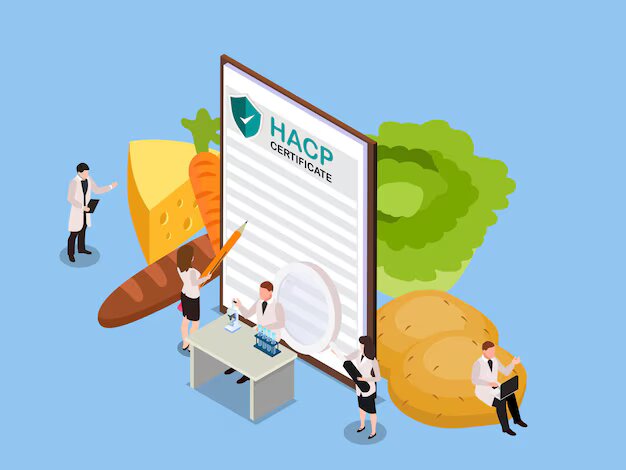For food importers and distributors, ensuring the safety and quality of the products you handle is non-negotiable. But here’s the kicker, how do you prove to your customers and regulatory authorities that your operations meet the highest safety standards? Enter HACCP (Hazard Analysis and Critical Control Points) certification. If you’re already thinking, “Sounds important, but what exactly is it?”, don’t worry. We’re going to break it down in a way that’s easy to understand, relatable, and, yes, quite essential for your business.
What is HACCP Certification, Anyway?
HACCP isn’t just another acronym to throw around in industry meetings. It’s a systematic approach to ensuring food safety by identifying and managing potential hazards throughout the entire food supply chain. The focus is on preventing food safety issues before they happen, rather than trying to fix them after the fact. For importers and distributors like yourself, it means taking a proactive role in safeguarding public health and ensuring that the food you distribute is safe to eat.
HACCP certification isn’t a requirement for every food business globally, but in many regions, it’s highly recommended (or even required). When your operations are HACCP-certified, you’re telling the world that your food handling and distribution meet the gold standard of food safety, which goes a long way in building trust and credibility with customers, clients, and regulatory bodies.
Why Should You Care About HACCP Certification?
Let’s be real, obtaining HACCP certification may sound like a hassle. It requires an investment of time, resources, and sometimes money. But here’s the thing, the payoff is worth it. Let’s dig into why getting certified should be at the top of your list.
1. Trust and Credibility with Customers
Food is one of the most basic things we consume, yet it’s also one of the things that consumers are most concerned about when it comes to safety. If your clients, whether they’re restaurants, retailers, or end consumers, know that your products are HACCP-certified, they’ll have one less thing to worry about.
Think about it: Wouldn’t you feel more comfortable buying food products from a distributor that has the backing of a robust safety system? It’s the same for your customers. They know that food safety isn’t a “nice-to-have” but a must-have. A HACCP-certified operation shows your commitment to food safety, and that’s the kind of commitment that builds loyalty.
2. Compliance with International Standards
As an importer or distributor, you’re not just handling local goods, you’re dealing with global supply chains. By having HACCP in place, you’re simplifying the process of ensuring that your operations meet the strict food safety standards required in different markets, whether you’re working with suppliers in Europe, Asia, or North America. No more scrambling to figure out what’s required where, you’re already covered.
3. Risk Management: A Preventive Approach
HACCP is all about prevention. Instead of waiting for something to go wrong and trying to patch things up later, you’re identifying potential hazards and putting measures in place to stop them before they can even start. For importers and distributors, that means fewer risks of contamination, spoilage, or other food safety issues making their way into the supply chain.
Imagine you’re distributing dairy products, and you’re unaware of a temperature fluctuation in one of your shipments. That could lead to spoilage and potentially sick customers. But with HACCP, you have systems in place to monitor critical control points (like temperature) and prevent that from happening. It’s a system designed to keep your operations, and your products, safe.
4. Reducing the Risk of Legal Issues
Food safety violations are serious business. If something goes wrong and your products are involved in a recall or, worse, an outbreak, it can not only damage your reputation but result in hefty fines, legal fees, and loss of business. With certification haccp, you’re less likely to face these issues because your processes are designed to identify and mitigate potential problems from the get-go.
In essence, it acts like insurance against legal troubles. The more you can prove that you’re following recognized food safety protocols, the better protected you are from regulatory fines and lawsuits.
5. Increased Marketability and Competitive Advantage
The food distribution market is crowded, with companies constantly vying for a piece of the pie. So, how do you stand out from the competition? One way is by becoming HACCP-certified.
When you have that certification, it sets you apart as a trusted partner. Whether you’re pitching to large retail chains or small local stores, businesses are far more likely to choose a distributor that is HACCP-certified because it shows that you take food safety seriously. Plus, you’ll have an advantage over competitors who are still operating without that stamp of approval.
The HACCP Certification Process: What’s Involved?
So, now that you know why HACCP is a game-changer, you’re probably wondering how to go about getting certified. It may seem daunting at first, but once you break it down into steps, it’s totally manageable. Here’s a quick overview:
Step 1: Hazard Analysis
The first step in the HACCP process is identifying the hazards that could potentially affect food safety. These hazards can be biological, chemical, or physical. For importers and distributors, this means reviewing the entire supply chain, starting from the suppliers you work with and extending all the way to the distribution process.
It’s like putting on a detective hat and trying to figure out where things could go wrong. Is there a risk of contamination in transport? Could the storage conditions for your products cause problems? Once you’ve identified potential hazards, you can move on to the next step.
Step 2: Critical Control Points (CCPs)
Next, you’ll need to identify the Critical Control Points (CCPs) in your process. These are the steps where food safety hazards are most likely to occur. For example, during transportation, you might need to monitor temperature closely for items that require refrigeration.
The goal here is to figure out where to implement control measures that will prevent the identified hazards from happening. These measures could be things like temperature controls, handling procedures, or equipment maintenance.
Step 3: Establishing Critical Limits
Once you’ve identified your CCPs, you need to set critical limits. These are the boundaries that you cannot exceed or fall below without risking food safety. For instance, if you’re storing perishable items, the critical limit might be a temperature range that the product can safely be kept in.
Step 4: Monitoring Procedures
Now comes the part where you put your plan into action. You’ll need to monitor your CCPs to make sure they’re being kept within those critical limits. This involves setting up systems to continuously track things like temperature, humidity, or cleanliness. And it’s not enough just to monitor, it’s crucial that you document everything. This documentation will serve as proof that you’re adhering to HACCP guidelines.
Step 5: Corrective Actions
No system is foolproof, and things may occasionally go wrong. When they do, it’s important to have a plan for taking corrective actions. If a CCP is found to be outside of the critical limits, you’ll need to step in and fix the issue before it compromises the safety of the product.
Step 6: Verification and Documentation
To ensure that the whole system is working as it should, you need to periodically verify that your processes are effective. This could involve conducting internal audits or getting a third-party expert to assess your practices.
Step 7: Continuous Improvement
HACCP isn’t a one-time deal. It’s an ongoing process. Once certified, you’ll need to keep reviewing and improving your food safety practices. This is the key to staying compliant and ensuring that your products continue to meet the highest safety standards.
Overcoming Common Challenges in HACCP Certification
Let’s not sugarcoat it: the HACCP certification process can be challenging. Many importers and distributors face roadblocks along the way, such as:
- Lack of resources or expertise: Implementing HACCP can require technical knowledge and experience. If you’re short on either, you might need to bring in external help.
- Cost of implementation: While getting certified can involve some upfront costs, the long-term benefits far outweigh the investment.
- Ongoing monitoring and documentation: Keeping up with the day-to-day documentation and monitoring can feel like a heavy lift. But the alternative, risking a food safety issue, is far worse.
The Bottom Line: HACCP Certification is Non-Negotiable
If you’re serious about running a food import and distribution business, HACCP certification should be at the top of your priority list. It’s not just about meeting regulations, it’s about protecting your brand, building trust, and ensuring that the products you handle are safe for consumers. In a world where consumers are more informed and more concerned about food safety than ever before, HACCP is the key to setting your business apart and staying competitive. So, roll up your sleeves and get ready to build a safer, more reliable food supply chain. The payoff is worth it.


